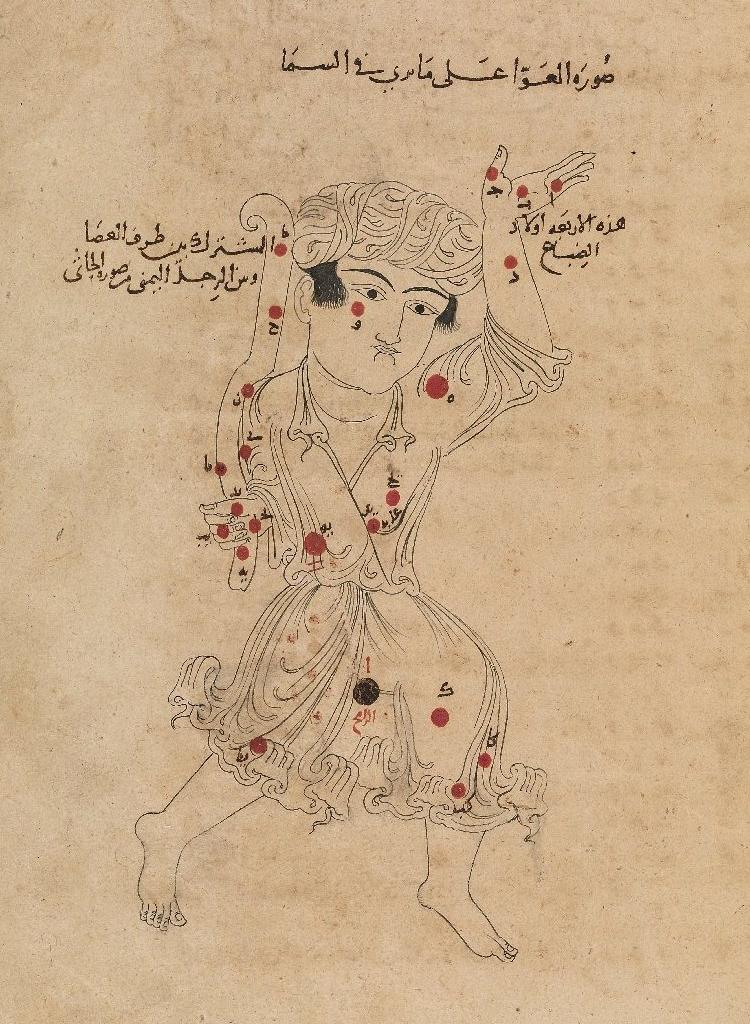Illustration from
'Book of Fixed Stars' (Kitāb suwar al-kawākib al-ṯābita)
by ‛Abd al-Rahman ibn ‛Umar al-Ṣūfī,
dated 1009-10 (Bodleian Library, Oxford, manuscript Marsh 144)
Page 70 - Bootes
 click to see the constellation Bootes from the opposite direction |
